Unveiling Kizil Grottoes: Ancient Artistry and Spiritual Serenity
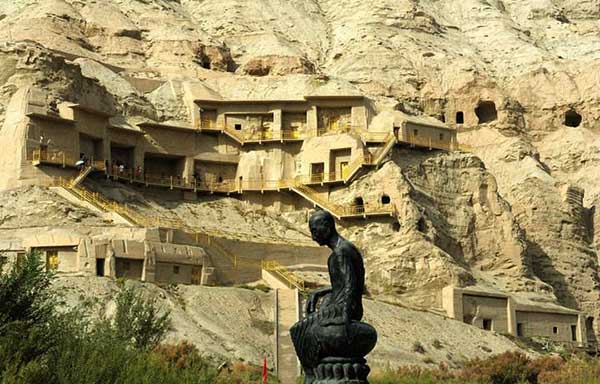
An Essential Guide to Visiting Kizil Grottoes
Nestled along the ancient Silk Road in Xinjiang, China, the Kizil Grottoes offer an extraordinary glimpse into the rich tapestry of Buddhist art and history. With over 1,800 years of legacy, these caves stand as the oldest and largest Buddhist grotto complex in the region, showcasing not just architectural brilliance but also the cultural exchange that flourished along this historic trade route. As the sun casts shadows on the intricate murals, visitors are transported back to a time when these caves served as a sanctuary for monks, artists, and travelers alike.
The Kizil Thousand Buddhas Caves, carved into the cliffs overlooking the Muzart River, boast an impressive collection of 339 caves, each adorned with exquisite frescoes that illustrate the life of Buddha and various Buddhist teachings. Unlike the more widely known Mogao Caves in Dunhuang, Kizil’s unique artistic style and vibrant colors offer a refreshing perspective on the evolution of Buddhist iconography in China.
Visiting the Kizil Grottoes is not only an opportunity to witness breathtaking artistry but also a chance to delve into the spiritual and historical significance of this UNESCO World Heritage site. Whether you are a history buff, an art lover, or simply in search of an off-the-beaten-path adventure, the Kizil Grottoes promise an unforgettable journey through time. Prepare to be awe-inspired as you explore these ancient sanctuaries and uncover the stories etched into their walls.
In This Guide
- An Essential Guide to Visiting Kizil Grottoes
- The Rich History and Legends of Kizil Grottoes
- Main Highlights: What You Absolutely Can’t Miss
- Planning Your Visit: A Practical Guide
- Tickets: Prices, Booking, and Tips
- How to Get There: A Complete Transportation Guide
- Local Cuisine and Accommodation Nearby
- Frequently Asked Questions
- Final Thoughts on Your Trip
The Rich History and Legends of Kizil Grottoes
The Kizil Grottoes, also known as the Kizil Thousand-Buddha Caves, stand as a testament to the rich tapestry of Buddhist heritage that flourished along the ancient Silk Road. These caves, carved into the cliffs of the Muzart River valley in Xinjiang, China, date back over 1,800 years, making them one of the oldest and most significant Buddhist grotto complexes in the country.
The history of the Kizil Grottoes is deeply intertwined with the spread of Buddhism into China. It was during the Eastern Han Dynasty, around the 1st century AD, that Buddhist teachings began to make their way through Xinjiang, largely facilitated by the Silk Road, which served as a vital conduit for trade and cultural exchange. The region, then part of the Qiuci (Kuche) Kingdom, became a prominent center for Buddhist worship and artistic expression. The rulers of Qiuci recognized the importance of Buddhism, commissioning skilled artisans to create these magnificent caves that would serve as both places of worship and artistic showcases.
Excavation of the Kizil Caves began in the late 3rd century and continued until the 9th century, spanning four distinct periods of construction. During the initial phase, caves were primarily square-shaped with a simple layout, often featuring a central shrine. As time progressed, the designs evolved, incorporating central pillars and more intricate layouts, including monk quarters and lecture halls. The thriving stage, which occurred during the 6th and 7th centuries, witnessed the application of gold leaf on statues and the emergence of grand central pillars, enhancing the visual splendor of these sacred spaces.
The murals found within the Kizil Grottoes are particularly noteworthy. They depict a myriad of scenes from the life of the Buddha, as well as stories illustrating the concept of Karma. The artists employed advanced techniques, such as shading and the diamond lattice composition, to bring these narratives to life. The colors, remarkably preserved over the centuries, are a testament to the skill and dedication of the artisans who labored to create these masterpieces.
However, the decline of the Kizil Grottoes coincided with the tumultuous events of the 8th and 9th centuries, including wars that swept through the region. This period saw a decrease in patronage and the eventual cessation of construction, leading to many caves falling into disrepair. Despite this, the remnants of the Kizil Grottoes continue to captivate visitors today, offering a glimpse into the artistic and spiritual fervor of an era long past.
In 2014, the Kizil Grottoes were inscribed as a UNESCO World Heritage site, recognized not only for their artistic significance but also for their role in the cultural exchange between the East and West along the Silk Road. As you explore the winding paths and marvel at the intricate murals, you are not just witnessing the remnants of a bygone civilization; you are stepping into a living history that continues to inspire awe and reverence among travelers and scholars alike.
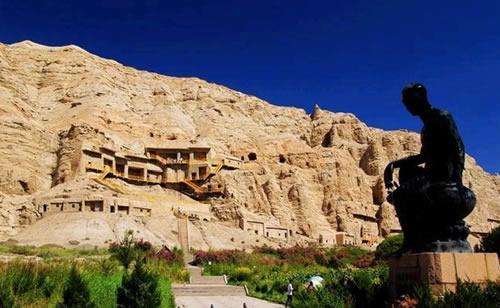
Kizil Grottoes.
Main Highlights: What You Absolutely Can’t Miss
The Kizil Grottoes, known as the Kizil Thousand-Buddha Caves, offer a captivating glimpse into the rich tapestry of Buddhist art and history in China. As you embark on your journey to this UNESCO World Heritage site, here are the main highlights you absolutely cannot miss:
1. Exquisite Murals and Frescoes
The Kizil Grottoes are celebrated for their stunning murals, which date back over 1,800 years. These artworks, characterized by their vivid colors and intricate details, depict scenes from the life of Buddha and other significant Buddhist narratives. Don’t miss the opportunity to explore Cave No. 38, renowned for its intricate paintings that showcase the artistic prowess of ancient craftsmen.
2. Architectural Marvels
Spanning approximately 3 kilometers, the Kizil Grottoes feature 339 caves that exemplify a range of architectural styles. Each cave served a unique purpose, from worship to meditation. Pay special attention to the central pillar caves, such as Cave No. 76, which highlight the advanced architectural techniques of the time, including the use of gold leaf in the statues.
3. Historical Significance
As the earliest Buddhist grottoes in China, the Kizil Caves were pivotal in the spread of Buddhism along the Silk Road. They illustrate the cultural exchange between East and West during ancient times. Consider visiting Cave No. 93, where remnants of war-related murals hint at the turbulent history that affected the region and its spiritual sites.
4. The Unique Cave Layout
The layout of the caves reflects the evolution of Buddhist practices and architecture over several centuries. Explore the initial stage caves, such as Cave No. 118, which feature simple square designs, to the thriving stage caves that boast elaborate central pillars and larger worship spaces. This progression tells the story of the growth and decline of Buddhist influence in the area.
5. Scenic Surroundings
Nestled on the north bank of the Muzart River, the Kizil Grottoes are surrounded by breathtaking natural beauty. Take a moment to appreciate the stunning landscapes that frame this historical site, making it an ideal spot for photography and reflection.
6. Visitor Experience
The Kizil Grottoes are designed to provide an immersive experience. With a recommended visiting time of about two hours, you can explore at a leisurely pace. The caves are open from 9:30 AM to 7:00 PM (May to September) and from 10:00 AM to 7:00 PM (October to April). Make sure to purchase a ticket, priced at CNY 70, to gain access to this cultural treasure.
7. Cultural Fusion
The Kizil Grottoes stand as a testament to the intersection of cultures along the Silk Road. As you wander through the caves, take note of the blend of artistic styles that reflect influences from both Central Asia and China, showcasing the rich history of cultural exchange.
8. Plan Your Visit
To make the most of your visit, aim to come during the best months—May to June or September to October—when the weather is mild. Consider joining a guided tour to gain deeper insights into the history and significance of the site.
With stunning art, profound history, and breathtaking surroundings, the Kizil Grottoes promise an unforgettable experience for any traveler. Don’t miss out on this remarkable chapter of China’s rich heritage!
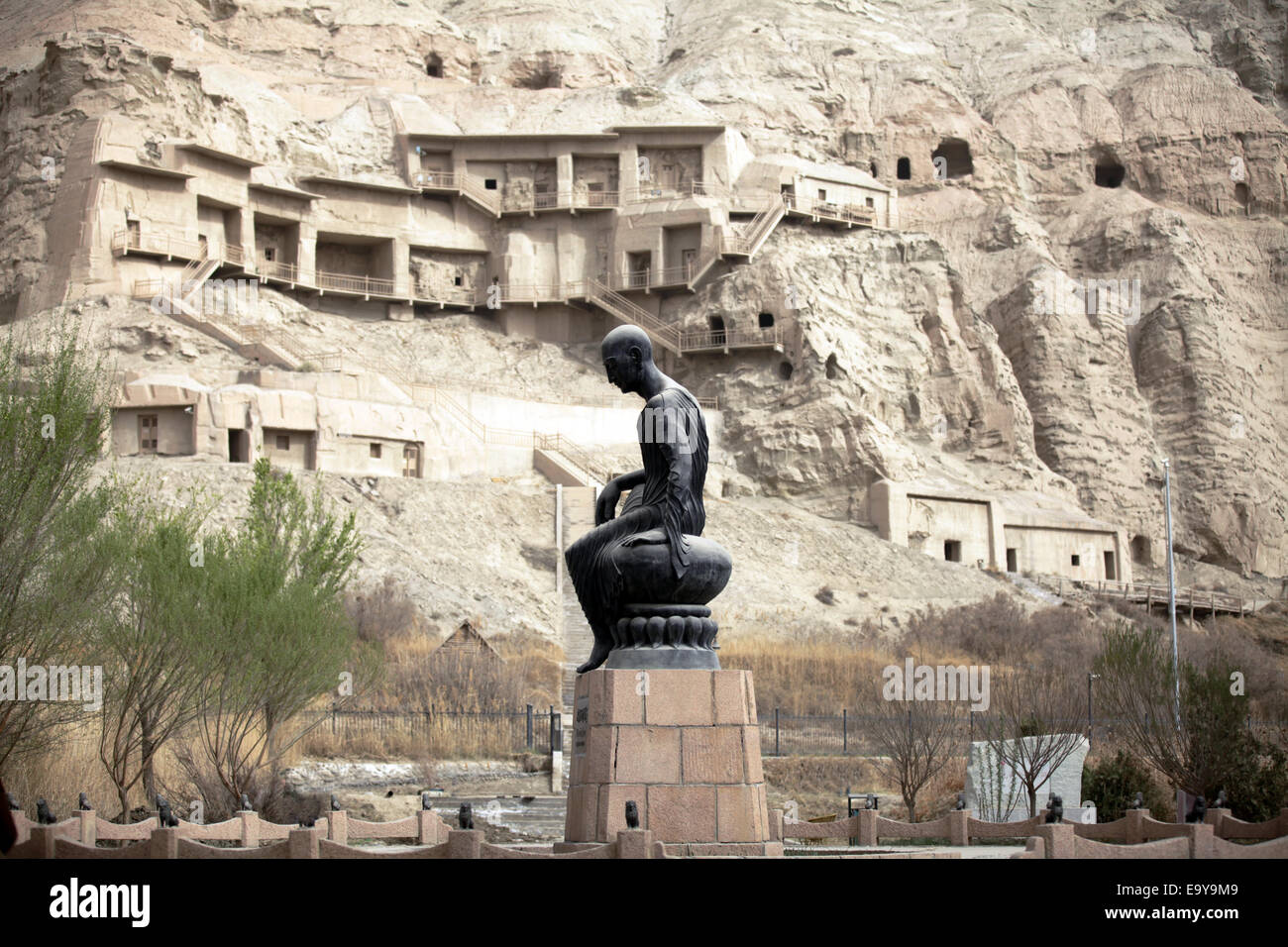
Kizil Grottoes.
Planning Your Visit: A Practical Guide
Visiting the Kizil Grottoes, also known as the Kizil Thousand Buddhas Caves, is an extraordinary journey into a rich cultural and historical tapestry that dates back over 1,800 years. Nestled in the stunning landscape of Xinjiang, these ancient caves are not only a testament to the artistic talent of their time but also an important part of the Silk Road heritage. Here’s everything you need to know to make the most out of your visit.
Getting There
Location:
The Kizil Grottoes are located in Kizil Village, Baicheng County, Aksu Prefecture, Xinjiang, approximately 60 kilometers from Aksu City.
Transportation Options:
– By Air: The nearest major airport is Aksu Airport, which has domestic flights from major Chinese cities. From the airport, you can hire a taxi or take a local bus to reach the grottoes.
– By Train: Aksu also has a train station with connections to various cities in Xinjiang and beyond. Upon arrival, taxis or local transport can take you to the caves.
– By Road: If you prefer driving, rent a car in Aksu and follow the signs to Kizil Grottoes. The scenic route along the Muzart River adds to the experience.
Best Time to Visit
The ideal months for visiting Kizil Grottoes are May to June and September to October. During these periods, the weather is mild and pleasant, perfect for exploring the caves. The summer months can be quite hot, while winter may bring cold temperatures and snow.
Entry Information
- Opening Hours:
- May to September: 09:30 AM – 07:00 PM
- October to April: 10:00 AM – 07:00 PM
- Admission Fee: CNY 70 per person
- Recommended Duration: Plan to spend at least 2 hours exploring the grottoes to fully appreciate the art and history.
What to Expect
The Kizil Grottoes contain 339 caves, each adorned with exquisite murals and sculptures that depict Buddhist teachings and the history of the region. Highlights include:
- Cave No. 38: Famous for its vibrant murals and depiction of Buddha’s life.
- Cave No. 129: Offers insights into the decline of Buddhist art during the later periods.
- Central Pillar Caves: Marvel at the architectural ingenuity of the caves, including monk rooms and worship temples.
Tips for Your Visit
- Dress Appropriately: Since the grottoes are located at an altitude of 1,200 meters, wear comfortable shoes and clothing suitable for walking and varying temperatures.
- Photography: While photography is often permitted, be respectful of local customs, and avoid using flash in the caves to protect the artwork.
- Guided Tours: Consider joining a guided tour to gain deeper insights into the history and significance of the caves. Many local operators offer comprehensive packages that include transport, guides, and other attractions in the area.
- Stay Hydrated: Bring water, especially if you’re visiting during the warmer months.
Nearby Attractions
After exploring the Kizil Grottoes, consider visiting other notable sites in the region, such as:
- Id Kah Mosque: Located in Kashgar, this is one of the largest mosques in China.
- Taklamakan Desert: Experience the vastness of this famous desert and its unique landscapes.
- Karakul Lake: A stunning high-altitude lake located near the Tajikistan border, perfect for breathtaking scenery and photography.
Conclusion
Visiting the Kizil Grottoes is a remarkable experience that immerses you in the ancient art and history of Buddhism as it spread along the Silk Road. With careful planning and an adventurous spirit, you will not only explore these incredible caves but also gain insight into a pivotal chapter of cultural heritage in China.
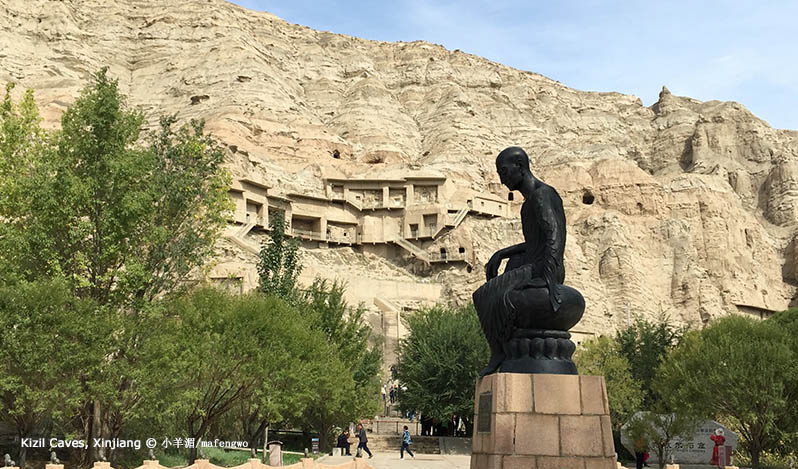
Kizil Grottoes.
Tickets: Prices, Booking, and Tips
When planning your visit to the Kizil Grottoes, it’s important to be informed about ticket prices, booking options, and some useful tips to enhance your experience.
Ticket Prices
A ticket for the Kizil Grottoes is priced at CNY 70 (approximately $10 USD). This fee grants you access to explore the fascinating caves and their intricate murals, which date back over 1,800 years.
Booking Information
While it’s possible to purchase tickets on-site, it’s highly recommended to book in advance, especially during peak tourist seasons (May-June and September-October). This can help you avoid long queues and secure your entry. Many travelers find it convenient to arrange their tickets through tour packages, which often include guided tours for a more enriching experience.
Opening Hours
The Kizil Grottoes are open from 09:30 AM to 7:00 PM from May to September, and from 10:00 AM to 7:00 PM from October to April. Plan to spend around 2 hours at the site to fully appreciate its historical and artistic significance.
Tips for a Memorable Visit
-
Best Time to Visit: The most pleasant months to visit are May through June and September through October. During these times, the weather is typically mild, allowing for a more comfortable exploration of the caves.
-
Dress Appropriately: Given the altitude of about 1,200 meters, temperatures can vary. Dress in layers and wear comfortable walking shoes, as the terrain can be uneven.
-
Photography: While you’ll want to capture the stunning murals and caves, be mindful of any restrictions on photography to respect the cultural heritage and the preservation efforts of this historical site.
-
Guided Tours: Consider joining a guided tour to gain deeper insights into the history and significance of the Kizil Grottoes. Knowledgeable guides can enhance your understanding of the intricate artworks and the evolution of Buddhist culture in the region.
-
Accessibility: The site may not be fully accessible for those with mobility issues. If this is a concern, check in advance to ensure your visit is comfortable.
By keeping these details in mind, you can ensure a smooth and enjoyable visit to the remarkable Kizil Grottoes, a true treasure of Buddhist heritage in Xinjiang.
How to Get There: A Complete Transportation Guide
Reaching the Kizil Grottoes, also known as the Kizil Thousand Buddha Caves, is an adventure that combines various modes of transportation. Nestled in the Aksu Prefecture of Xinjiang, these ancient Buddhist caves are a must-visit for anyone traveling along the Silk Road. Here’s how to navigate your way to this UNESCO World Heritage site.
By Air
Nearest Airport: The closest major airport to the Kizil Grottoes is Aksu Airport (AKU), located approximately 50 kilometers away from the caves.
Flight Options:
– Domestic flights operate regularly from major Chinese cities such as Urumqi, Chengdu, and Beijing to Aksu Airport. Urumqi, the capital of Xinjiang, is a common transit point and offers numerous daily flights.
From the Airport:
Once you arrive at Aksu Airport, you can hire a taxi or arrange for a private transfer to Kizil Grottoes. The drive typically takes about an hour, offering scenic views of the surrounding landscape along the way.
By Train
Train Services: For those traveling from Urumqi, taking a train can be a scenic and enjoyable option. The journey to Aksu takes approximately 10 to 12 hours, with both day and night trains available.
Train Station:
– Upon arriving at Aksu Railway Station, you can take a taxi or a local bus to reach the Kizil Grottoes.
By Road
Self-Driving: If you enjoy the freedom of driving, renting a car is a great way to explore the region. The roads are generally well-maintained, and the journey from Urumqi takes around 10 hours by car, depending on traffic and road conditions.
Public Transport:
– Buses from Urumqi to Aksu are available and take approximately 12 hours. These buses typically depart from Urumqi’s main bus station. Be sure to check the schedules in advance, as they may vary.
Local Transportation
From Aksu to Kizil Grottoes:
Once in Aksu, you can catch a local bus heading toward Kizil Village, where the grottoes are located. This ride usually takes about 30 to 40 minutes. Alternatively, taxis are readily available for a more direct and faster route.
Best Time to Visit
The ideal months to visit the Kizil Grottoes are May to June and September to October when the weather is pleasant, and the caves are open from 9:30 AM to 7:00 PM during the summer months.
Ticket Information
Admission to the Kizil Grottoes costs approximately CNY 70 per person. It’s advisable to purchase your tickets in advance during peak tourist seasons to avoid long queues.
Final Tips
- Language: English is not widely spoken in the region, so having a translation app or a phrasebook can be helpful.
- Cash: While some places may accept cards, it’s essential to carry cash, as many local businesses do not accept credit cards.
- Travel Insurance: Consider getting travel insurance that covers domestic travel within China, especially if you plan to drive.
With this guide, you’re well-equipped to embark on your journey to the breathtaking Kizil Grottoes, a site where history, art, and spirituality converge in the heart of Xinjiang. Enjoy your travels!
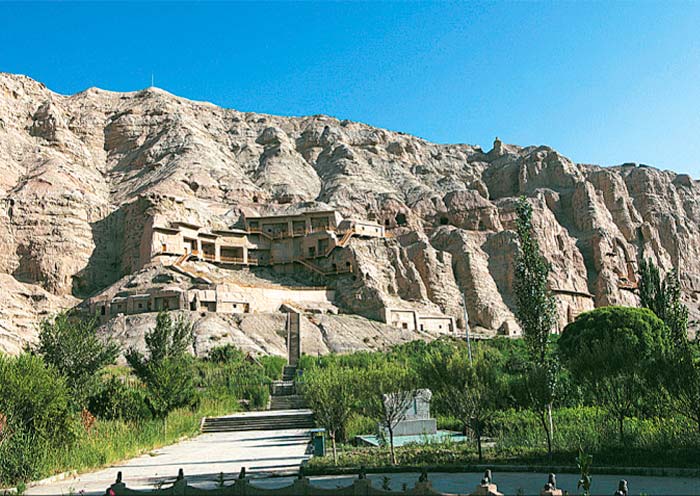
Kizil Grottoes.
Local Cuisine and Accommodation Nearby
When visiting the Kizil Grottoes, not only will you be immersed in rich Buddhist history and stunning murals, but you’ll also discover delightful local cuisine and comfortable accommodations to enhance your experience. Here’s a guide to savor the flavors of Xinjiang and rest well after your explorations.
Local Cuisine
Xinjiang is renowned for its diverse culinary influences, a reflection of its historical role as a melting pot along the Silk Road. Here are some local dishes and eateries you should not miss:
-
Naan Bread: A staple in Xinjiang, this fluffy flatbread is often baked in a tandoor. Enjoy it fresh from the oven at local bakeries around Kizil, where it’s typically served with a variety of dips or alongside main courses.
-
Lamb Skewers (Chuan’r): Grilled to perfection and seasoned with cumin and chili, these skewers are a must-try. Look for street vendors near the entrance to the Kizil Grottoes for the best experience.
-
Biryani: Xinjiang-style biryani, made with fragrant rice and tender lamb, is a favorite among locals. Many restaurants in nearby towns offer this hearty dish, often accompanied by a refreshing yogurt drink.
-
Dapanji (Big Plate Chicken): This dish features chicken stewed with potatoes, bell peppers, and a mix of spices, served on a large platter. It’s perfect for sharing and is best enjoyed with naan.
For a more immersive dining experience, consider visiting Kizil Grottoes Restaurant located in a nearby village. This local establishment prides itself on traditional Uyghur dishes and provides a cozy atmosphere with stunning views of the surrounding landscape.
Accommodation
After a day of exploring the Kizil Grottoes, you’ll want a comfortable place to unwind. Here are a couple of nearby accommodations that cater to international travelers:
-
Kizil Grottoes Hotel: Located just a short drive from the grottoes, this hotel offers clean, spacious rooms and friendly service. Some rooms even feature balconies with scenic views of the cliffs and the Muzart River. The hotel also serves a complimentary breakfast, featuring local dishes to start your day right.
-
Aksu Hotel: A bit further away but highly recommended, this hotel provides a blend of modern amenities and traditional decor. It’s an excellent base for exploring the area, with comfortable beds and a restaurant that serves both Chinese and Uyghur cuisine.
-
Homestays in Kizil Village: For a more authentic experience, consider staying in a homestay. Many local families open their homes to travelers, offering not only a bed but also home-cooked meals and storytelling about the region’s rich history.
Opting for these culinary delights and cozy accommodations will undoubtedly enrich your journey to the Kizil Grottoes, blending the beauty of the past with the flavors of the present.
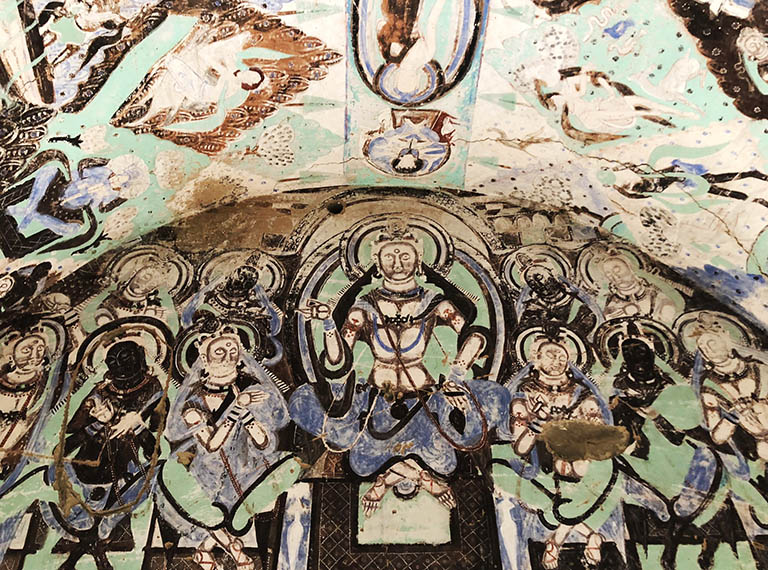
Kizil Grottoes.
Frequently Asked Questions
-
What are the Kizil Grottoes, and why are they significant?
The Kizil Grottoes, also known as the Kizil Thousand-Buddha Caves, are the oldest and largest Buddhist cave complexes in Xinjiang, China. With over 1,800 years of history, they hold exceptional artistic and cultural value, featuring exquisite murals and sculptures that represent the early transmission of Buddhism along the Silk Road. They were inscribed as a UNESCO World Heritage site in 2014. -
When is the best time to visit the Kizil Grottoes?
The ideal months to explore the Kizil Grottoes are from May to June and September to October. During these months, the weather is typically mild, making your visit more enjoyable. -
What are the opening hours and ticket prices?
The Kizil Grottoes are open from 09:30 AM to 7:00 PM from May to September, and from 10:00 AM to 7:00 PM from October to April. Entrance tickets cost CNY 70 (approximately USD 10). -
How long should I plan to spend at the Kizil Grottoes?
A visit typically requires around 2 hours to appreciate the stunning caves and their rich history. However, if you’re a photography enthusiast or have a keen interest in history, you might want to allocate more time. -
What should I wear when visiting the Kizil Grottoes?
Comfortable clothing and sturdy walking shoes are recommended, as the site involves some walking. Since the caves are located at an altitude of about 1,200 meters, layering is advisable, especially if visiting in cooler months. -
Is there public transportation available to reach the Kizil Grottoes?
Visitors can reach the Kizil Grottoes by taking a bus or hiring a taxi from nearby towns such as Aksu or Baicheng. It’s advisable to check local transport schedules in advance, as services may be limited. -
Are there any facilities available for visitors at the site?
Basic facilities like restrooms and a small visitor center are available at the Kizil Grottoes. However, there are limited dining options nearby, so it’s a good idea to bring snacks and water, especially if you plan to spend a few hours there. -
Can I take photos inside the caves?
Photography policies can vary by location, so it’s best to check for any signage regarding photography restrictions. Generally, taking pictures of the outside and the surroundings is encouraged, but flash photography and tripods may be prohibited inside the caves to protect the ancient artworks.
Final Thoughts on Your Trip
As you conclude your journey through the mesmerizing Kizil Grottoes, take a moment to reflect on the rich tapestry of history and culture that envelops this remarkable site. Standing before the ancient murals and intricate carvings, you are not just witnessing art; you are connecting with the spiritual essence of a civilization that flourished along the Silk Road. The Kizil Caves, with their breathtaking views and stories etched in stone, invite you to ponder the passage of time and the enduring legacy of Buddhism’s early influence in China.
Whether you were captivated by the brilliant colors of the frescoes or felt a sense of serenity in the quiet chambers, each corner of the Kizil Grottoes holds a piece of the past that continues to resonate today. As you leave, remember that your experience here is part of a larger narrative—a story of cultural exchange, artistic mastery, and spiritual exploration.
So, carry the spirit of Kizil with you, and let it inspire your future travels. The echoes of the past and the beauty of the present await you in every journey yet to come. Safe travels!